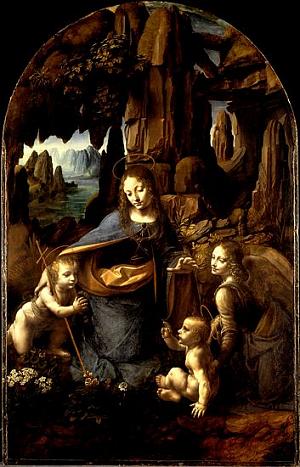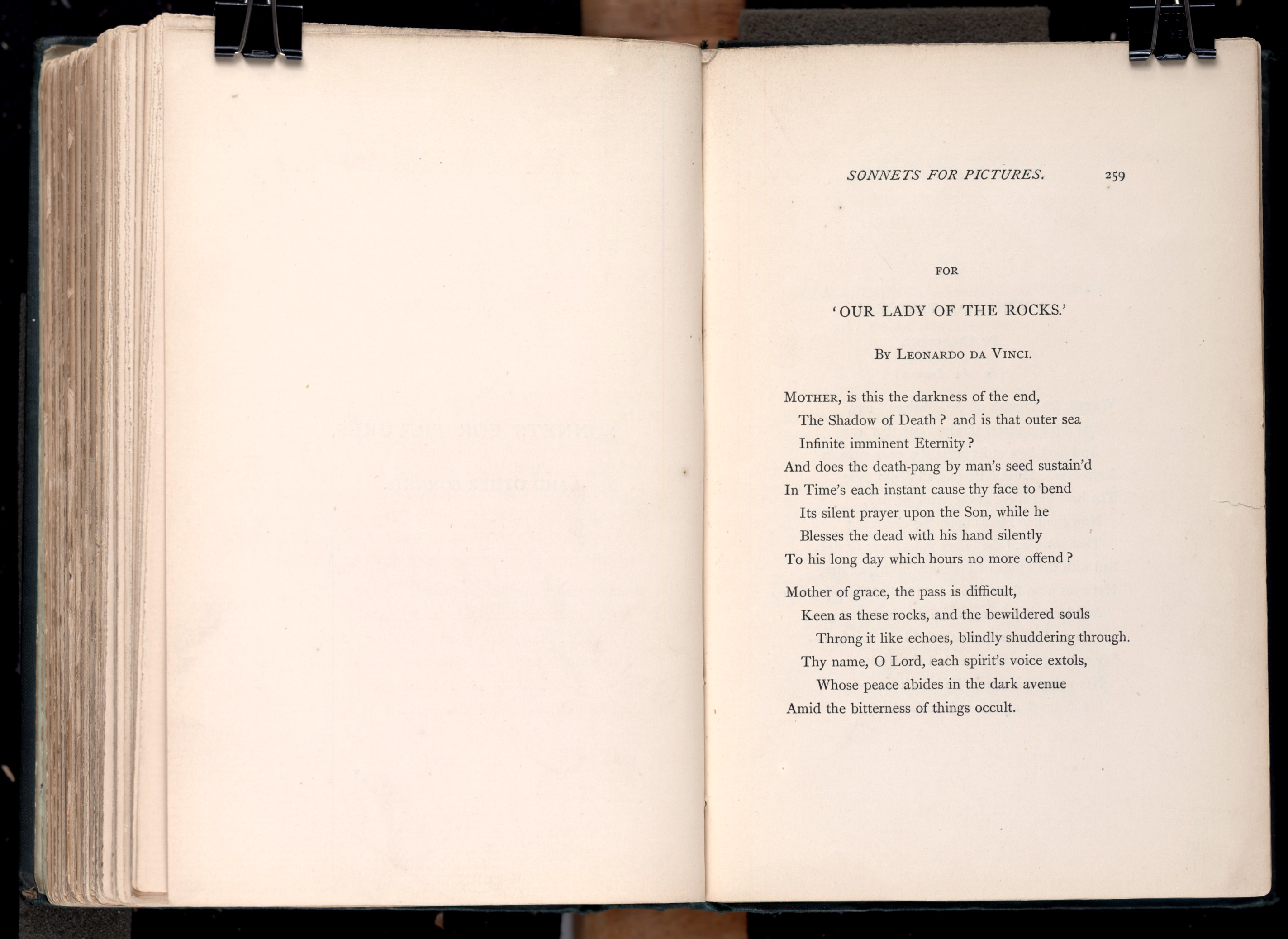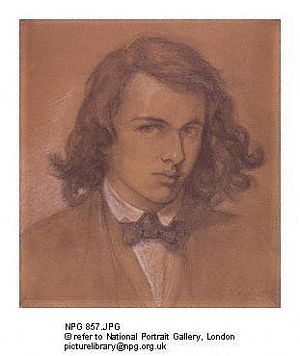Rossetti's 'For Our Lady of the Rocks": An Examination of Pre-Raphaelite Beliefs
Vilayath and Lance
1323
|
In the 19th century, a
group of artists created a style and aesthetic movement that challenged the dominant
notions of beauty. This group would come to be known as the Pre-Raphaelite
Brotherhood. This exhibit will discuss how the use of ekphrastic poetry,
particularly Dante Gabriel Rossetti’s For
‘Our Lady of the Rocks’, illuminates Rossetti’s Pre-Raphaelite ideals;
ideals that not only challenged established art, but would influence an entire
new lens through which art could be viewed. This essay will prove that
Rossetti’s poem, based on Leonardo Da Vinci’s painting Our Lady of the Rocks, highlights Pre-Raphaelite beliefs that
question beauty by exploring the paradigm of beauty and morbidity. This
will be accomplished through an analysis of ekphrastic poetry and how it
enabled Rossetti to write about these attitudes that were emerging for the
Brotherhood that would come some years later. The discussion will also include
an in-depth analysis of the set of beliefs that the Pre-Raphaelites had towards
art, and Rossetti’s sonnet will be compared with the imagery of Da Vinci’s
painting. Thus, a clear example of how the Pre-Raphaelites viewed the world and
how they accomplished making artistic choices based on these perceptions will
be provided in the course of this exhibit. |
|
Ekphrastic poetry and how it enabled Rossetti to express his impressions of Da Vinci’s painting must be analyzed in order to introduce the Pre-Raphaelite notions that not only influenced aesthetic tastes in Victorian society, but also influenced contemporary society’s outlook on art. The ekphrastic spectator, as Benton states, reads poems , “which, in turn are reading paintings or sculptures; and maybe, doing so from the position of knowing the visual work before the poem; or maybe, of coming to it as a result of the poem; or maybe, of ‘reading’ the visual work through or alongside or against the poem’s ‘reading’ of it”. |




